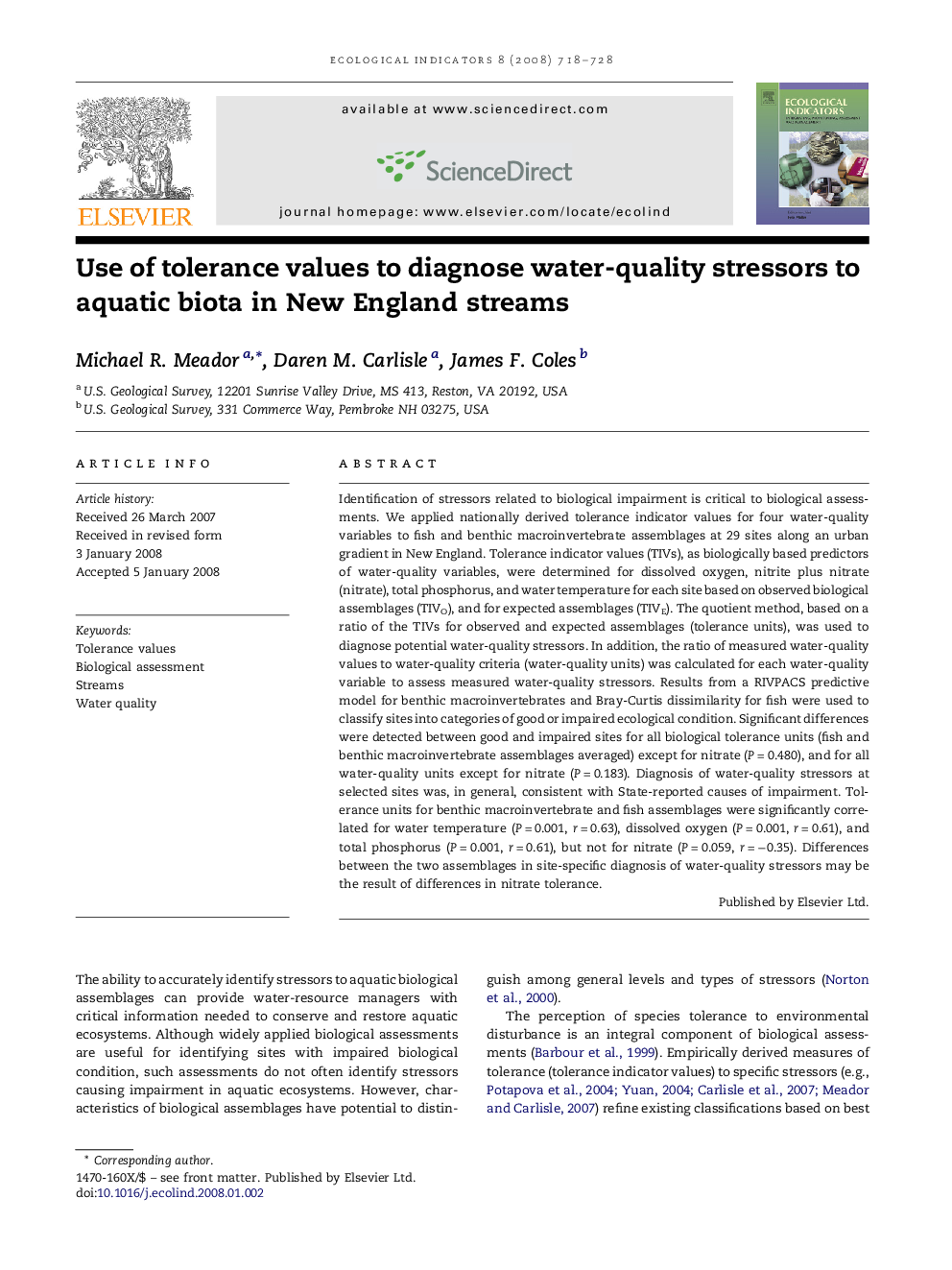| Article ID | Journal | Published Year | Pages | File Type |
|---|---|---|---|---|
| 4374415 | Ecological Indicators | 2008 | 11 Pages |
Abstract
Identification of stressors related to biological impairment is critical to biological assessments. We applied nationally derived tolerance indicator values for four water-quality variables to fish and benthic macroinvertebrate assemblages at 29 sites along an urban gradient in New England. Tolerance indicator values (TIVs), as biologically based predictors of water-quality variables, were determined for dissolved oxygen, nitrite plus nitrate (nitrate), total phosphorus, and water temperature for each site based on observed biological assemblages (TIVO), and for expected assemblages (TIVE). The quotient method, based on a ratio of the TIVs for observed and expected assemblages (tolerance units), was used to diagnose potential water-quality stressors. In addition, the ratio of measured water-quality values to water-quality criteria (water-quality units) was calculated for each water-quality variable to assess measured water-quality stressors. Results from a RIVPACS predictive model for benthic macroinvertebrates and Bray-Curtis dissimilarity for fish were used to classify sites into categories of good or impaired ecological condition. Significant differences were detected between good and impaired sites for all biological tolerance units (fish and benthic macroinvertebrate assemblages averaged) except for nitrate (P = 0.480), and for all water-quality units except for nitrate (P = 0.183). Diagnosis of water-quality stressors at selected sites was, in general, consistent with State-reported causes of impairment. Tolerance units for benthic macroinvertebrate and fish assemblages were significantly correlated for water temperature (P = 0.001, r = 0.63), dissolved oxygen (P = 0.001, r = 0.61), and total phosphorus (P = 0.001, r = 0.61), but not for nitrate (P = 0.059, r = â0.35). Differences between the two assemblages in site-specific diagnosis of water-quality stressors may be the result of differences in nitrate tolerance.
Related Topics
Life Sciences
Agricultural and Biological Sciences
Ecology, Evolution, Behavior and Systematics
Authors
Michael R. Meador, Daren M. Carlisle, James F. Coles,
